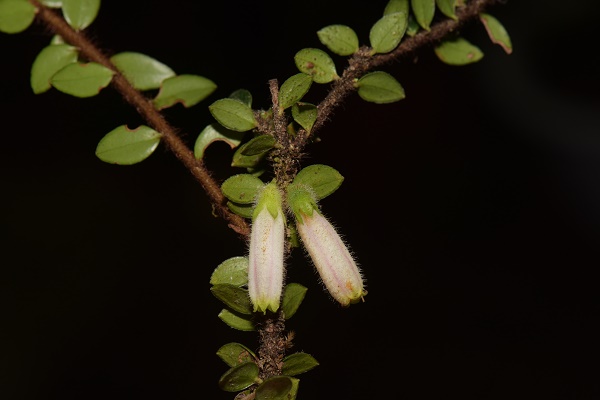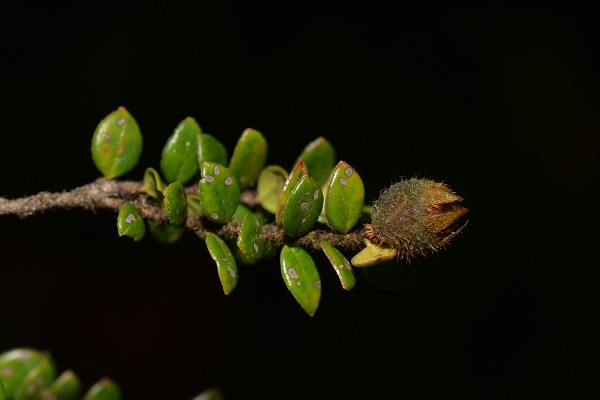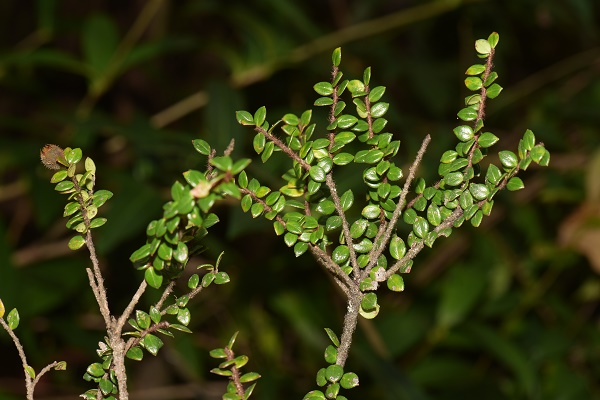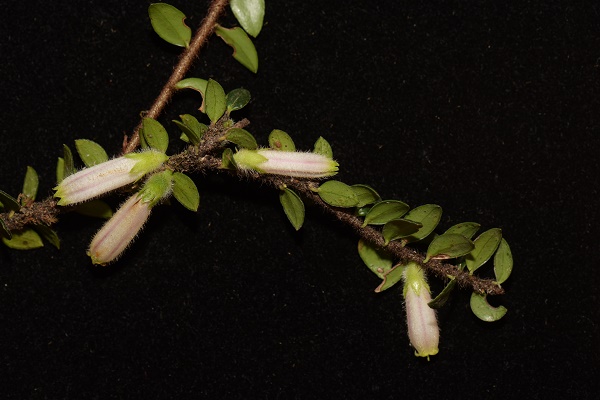Agapetes comprises approximately 100 species , most of which are distributed in the Asian subtropical monsoon region. In China, 59 species and two varieties are recognized.
During floristic exploration of Yingjiang County, Yunnan Province from 2021 to 2023, researchers from Xisuangbanna Tropical Botanical Garden (XTBG) encountered an interesting Agapetes species. After a detailed examination of the morphological characters of the material and similar species, the researchers confirmed that the plant represented a species new to science.
The new species is named Agapetes lihengiana in honor of Prof. LI Heng of Kunming Institute of Botany, who has made great contributions to our knowledge of the flora of Gaoligong Mountains in China. It was published in Taiwania on September 2.
Agapetes lihengiana is an epiphytic evergreen shrub. It is morphologically similar to A. epacridea and A. trianguli, but can be clearly distinguished from the former by its leaf blade with an acute or apiculate apex, secondary veins conspicuous, and shorter pedicel; and from the latter by its white corolla with five vertical pink stripes, shorter pedicel, and shorter anther.
Agapetes lihengiana is known only from Yingjiang County of West Yunnan, Southwest China. It is epiphytic on the trees of subtropical evergreen broad-leaved forests at 2100–2200 m elevations.
"During our survey, only two populations of Agapetes lihengiana were encountered.One locality in Sudian Township has Lanxangia tsaoko planted under the forest, and this forest is at the edge of the Yunnan Tongbiguan Provincial Nature Reserve. The habitat of this species is under threat from tree felling in the area. We thus assessed the conservation status of this species as vulnerable (VU) following IUCN guidelines," said TAN Yunhong of XTBG.
Contact
TAN Yunhong Principal Investigator
Center for Integrative Conservation, Xishuangbanna Tropical Botanical Garden, Chinese Academy of Sciences, Menglun, Mengla, Yunnan 666303, China
E-mail: tyh@xtbg.org.cn

Agapetes lihengiana (Image by YANG Bin)

Agapetes lihengiana (Image by YANG Bin)

Agapetes lihengiana (Image by YANG Bin)

Agapetes lihengiana (Image by YANG Bin)




